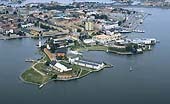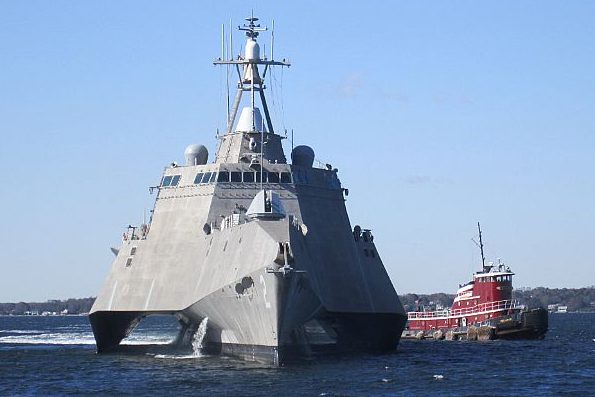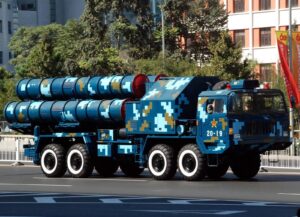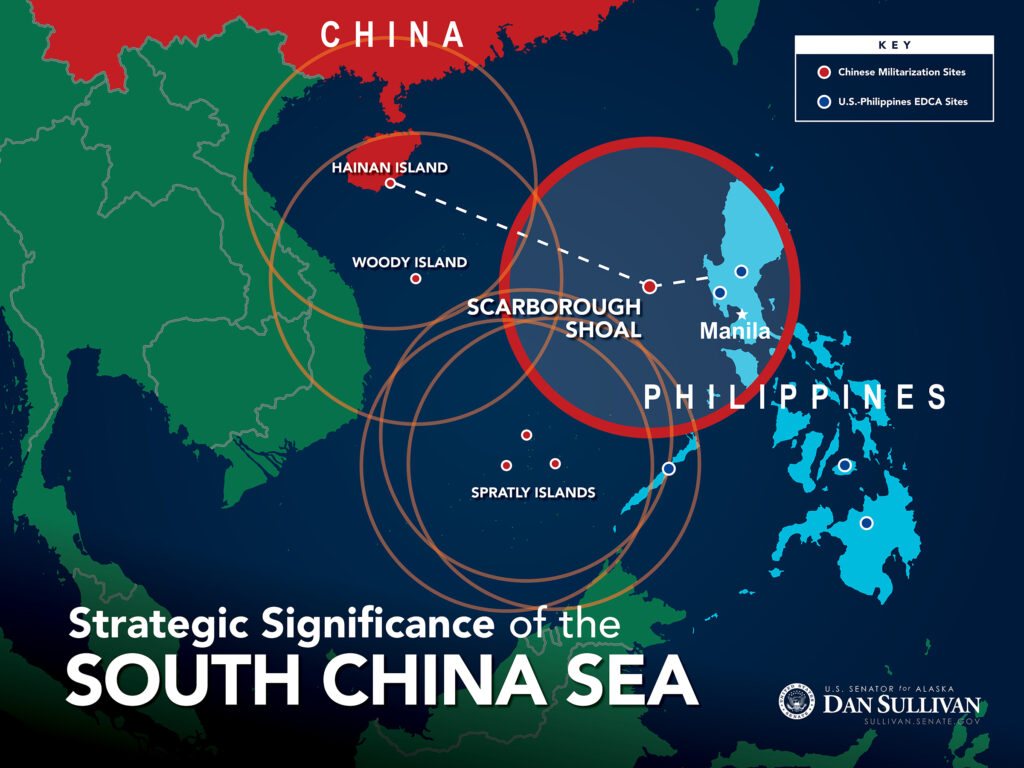LCS-2, USS Independence, shows off its unique “trimaran” design.
The strangest-looking ship in the Navy is conducting two crucial tests. A broad, triple-hulled “trimaran” design likened to a villain’s vessel from Star Trek, theIndependence-class Littoral Combat Ship completed its Initial Operational Test & Evaluation on June 3rd. What’s more, the Navy Sea Systems Command announced yesterday, the USSCoronado (LCS 4) wrapped up IOT&E with its second successful test-firing of SeaRAM, a self-defense system designed to shoot down enemy drones and cruise missiles.
Just days later, sister ship USS Jackson (LCS 6) completed the first of three “full ship shock trials” June 10th, with live explosives going off underwater near the ship. Both shooting down incoming missiles and riding out explosions are critical capabilities for relatively small and inexpensive ships often derided as too fragile to take a hit.
USS Jackson (LCS 6) rides out a nearby explosion during its full-ship shock trials.
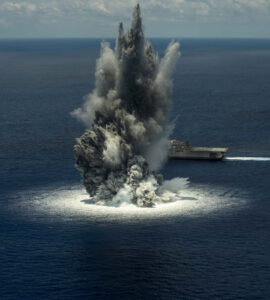
So completing these tests is a significant step for the more obscure of the two LCS variants. The Independence ships have been overshadowed by the better-known Freedomclass. (The Freedom-class ship Fort Worth, LCS-3, completed IOT&E back in 2014). WhileFreedom-class LCS have conducteddeployments to Singapore — and suffered high-profile problems like hull cracks andbreakdowns at sea — the Independence ships have largely stuck to home waters, serving as test platforms for the minesweeping equipmentand other “mission modules” that will go on both types.
Indeed, it’s easy to forget that the Littoral Combat Ship is really two distinct designs, each making half of the production run. Odd-numbered ships, starting with LCS-1 Freedom, are built by Lockheed Martin and Wisconsin’s Marinette Marine. Their steel hull and aluminum superstructure that look like a conventional warship’s, albeit with touches inspired by an Italian racing yacht to help it reach high speeds. Even-numbered ships, starting with LCS-2Independence, are built at Austal’s Gulf Coast shipyard. Evolved from Australian high-speed ferries, they’re all-aluminum and they look weird.
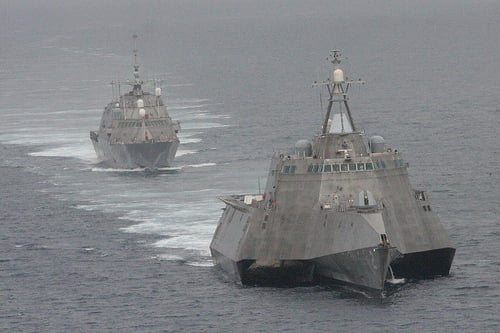
LCS-2, USS Independence, followed by LCS-1, USS Freedom, showing the different designs.
“When that thing comes in port, everyone says, ‘What the hell is that?'” Work once said. “It looks like the Klingon Bird of Prey.”
Work has backed the LCS since his time as Navy undersecretary. Back then, he argued that the Navy needed to build both variants because of the different strengths of each design:
- The sporty Freedoms would be ideal for the tight confines of the Persian Gulf, Work said, where they could nimbly play cat-and-mouse with swarms of Iranian fast attack boats. The Freedom‘s traditional hull also makes it easy to launch and recover inflatable boats — for boarding actions or security sweeps — and unmanned craft off the stern ramp. Finally, Freedom‘s steel hull is also more damage-resistant than theIndependence‘s aluminum.
- The Independence is much higher off the water, so it must launch and recover subordinate craft with a crane, a much more awkward arrangement. But it’s also much broader, giving it a larger flight deck for helicopters and drones, plus more room for mission equipment, supplies, and fuel below. Work suggested these traits might make the trimarans better suited for the vast reaches of the Pacific.
Navy Secretary Ray Mabus has also insisted on buying both versions, although his argument has focused on cost. The rival shipyards slashed their prices when the Navy threatened to “downselect” to one, and as long as each yard knows it’s not the Navy’s only option, they’ll keep their bids low. While it’s more logistically efficient to maintain and supply a fleet of identical ships rather than multiple types, the Navy acknowledges, they’re buying so many LCS of each variant that they’ll still get economies of scale.
Both Defense Secretary Ashton Carter and his predecessor Chuck Hagel, however, have ordered the Navy to buy fewer Littoral Combat Ships and select just one shipyard to buildthe upgraded “frigate” version. So while both Austal and Marinette are preparing frigate designs, based on their existing ships, by 2019 the Navy will have to choose between the conventional hull and the Bird of Prey.
